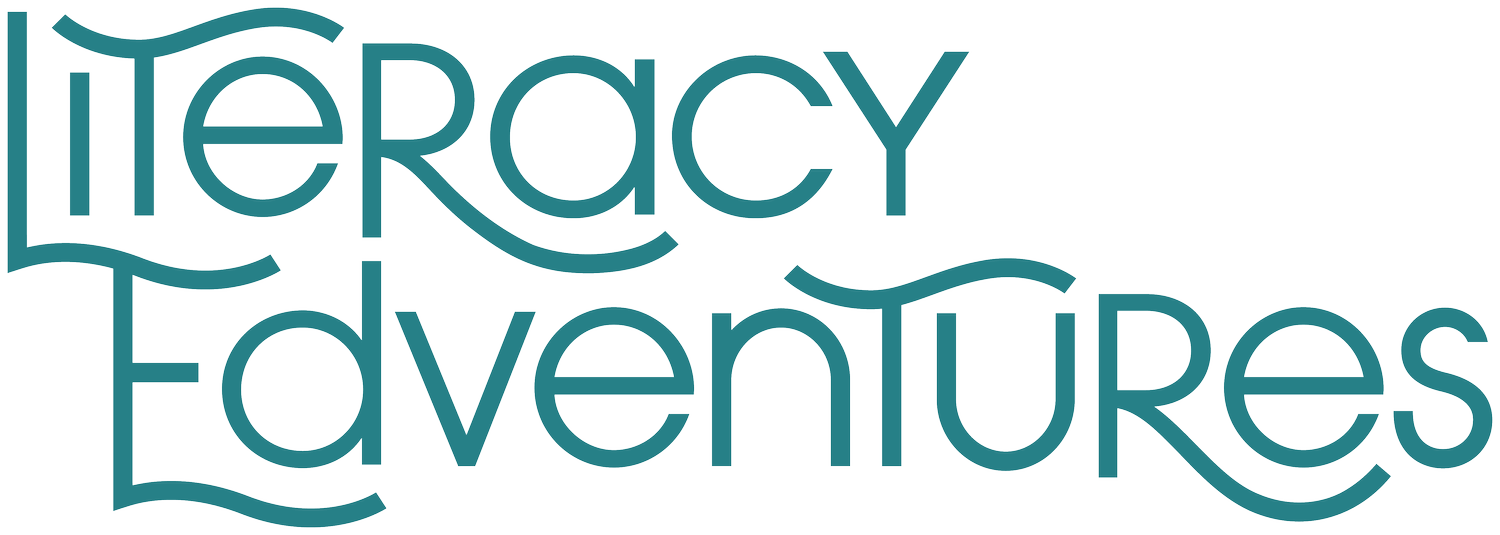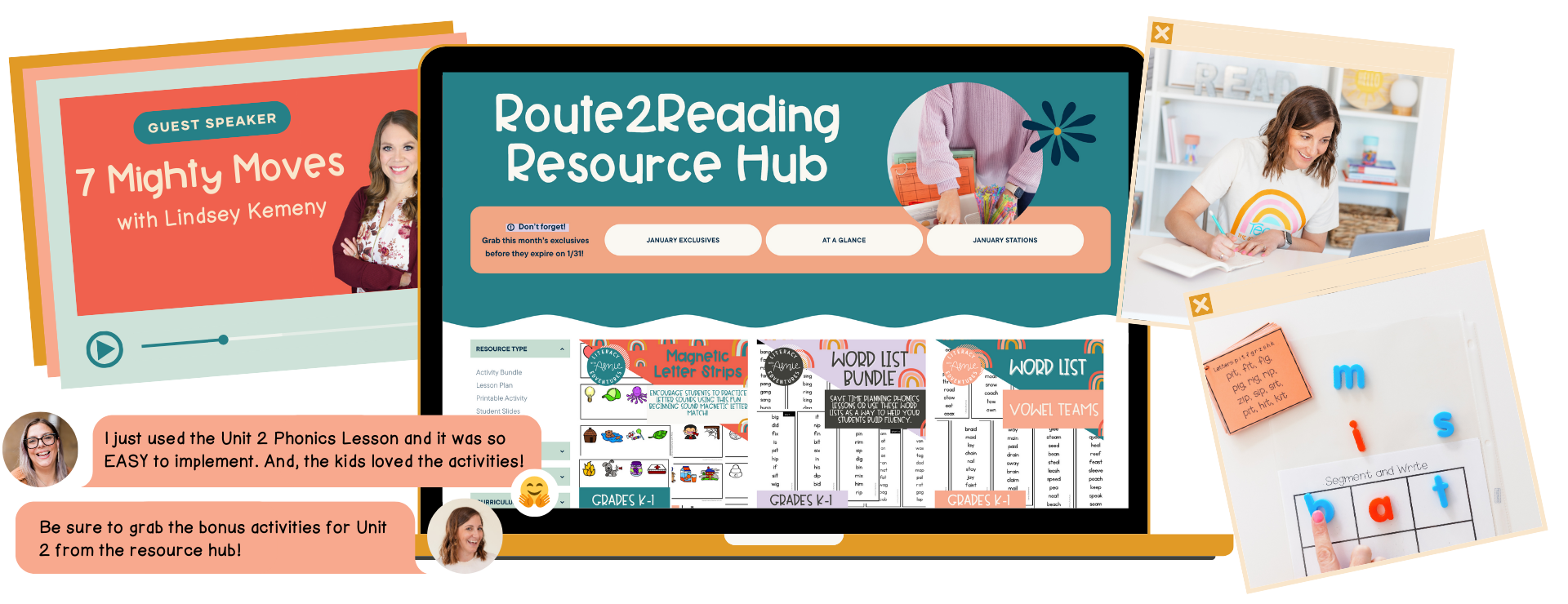Streamlining Small Group Phonics Lesson Planning: Simplify and Save Time
Introduction
In Part One, we explored the essential components of an effective small-group phonics lesson: warm-up and cumulative review, explicit teaching, and application. Now, in Part Two, we’re diving into how to make the planning process easier while ensuring your lessons are impactful and efficient.
Planning small group phonics lessons doesn’t have to be overwhelming. By streamlining your approach, you can save time and create a consistent routine that benefits both you and your students. Let’s break down how to simplify each part of your lesson plan while maintaining its effectiveness.
Step 1: Simplify the Warm-Up & Cumulative Review
The warm-up is where students revisit previously taught skills and prepare for new learning. The key to streamlining this portion is consistency. Read more about this component here.
How to Streamline the Warm-Up:
Use the Same Format Every Day: Select a sequence of warm-up activities that work for your students and stick to it. Decide what activities you will incorporate each day. Remember, you have a bank of activities in your toolkit when it comes to the warm-up portion of your lesson, and you do not have to do every activity every day. Spread them out throughout the week. For example,
on Monday, you might…
Start with a quick phonemic awareness activity (e.g., blending or segmenting).
Follow with a visual drill (e.g., flashcards with graphemes).
End with a blending drill using a blending board.
But on Tuesday, you might incorporate
an auditory drill
a vowel-intensive
blending drill
Swap the Skill, Not the Structure: Keep the routine consistent for all groups, but adjust the phonics skill based on each group’s needs. For instance, Group A might work on short “a,” while Group B focuses on digraphs. The warm-up remains the same, but the phonics skill changes. By maintaining the same structure, you eliminate the need to plan new activities each day while ensuring students get targeted practice.
Step 2: Streamline Explicit Teaching
The explicit teaching portion introduces new skills clearly and systematically and then practices those skills in isolation. To make this process easier, focus on repetition and predictability.
How to Streamline Explicit Teaching:
Create a Weekly Routine: Choose a few activities and assign them to specific weekdays. This way, you’re not reinventing the wheel each week.
Use Core Activities: Select high-impact activities like word mapping, chaining, and sorting. Rotate these consistently so students know what to expect.
Sample Weekly Routine for Explicit Teaching:
Monday: Introduce the week’s phonics skill with direct instruction (e.g., digraph “sh”). Follow with word mapping using Sound boxes.
Tuesday: Practice word chaining to reinforce sound manipulation.
Wednesday: Incorporate high-frequency words related to the skill.
Thursday: Reinforce the skill with guided practice (e.g., fluency grids, roll and reads, etc.).
Friday: Assess understanding through an application activity like spelling or dictation (see below).
Consistency reduces your planning time while helping students build confidence in a predictable learning environment.
Step 3: Streamline the Application Phase
The application phase bridges the gap between phonics instruction and fluent reading and writing. Streamlining this step involves creating a logical progression for students to follow throughout the week.
How to Streamline Application:
Focus on Skill-Specific Decodables: Choose decodable texts that align directly with the phonics skill you are teaching. This ensures students are practicing what they have learned in a meaningful way.
Scaffold the Progression: Start the week with shorter tasks, such as reading words in isolation, sentences, and sentence pyramids. Gradually increase complexity, leading to longer decodable texts by the end of the week.
Incorporate Rereading and Writing: Reserve time at the end of the week for students to reread longer texts for fluency and engage in writing activities connected to the text.
Sample Weekly Routine for Application:
Monday: Students read decodable words in isolation (e.g., “sat, bat, mat”) to reinforce the phonics skill. Then, write three words with that skill through dictation.
Tuesday: Practice fluency with sentence pyramids (e.g., “I / I see / I see a bat.”).
Wednesday: Read decodable sentences (e.g., “The bat is on the mat.”). Then, complete a sentence dictation.
Thursday: Transition to longer decodable passages or texts, focusing on comprehension and fluency.
Friday: Reread the longer text and complete a connected writing activity, such as summarizing or answering comprehension questions. Then, complete a sentence dictation.
This structured approach ensures that students practice skills in varied ways without requiring you to plan unique activities for every group.
General Tips for Streamlining Small Group Planning
Batch Plan: Dedicate a specific time each week to plan all small group lessons at once. Use templates to speed up the process. Consistency from day to day is key! Remember, change the skill, NOT the activity.
Use Pre-Made Resources: Invest in quality phonics materials, including lesson plans, decodable texts, and activities aligned with your scope and sequence.
Reflect and Adjust: Evaluate what’s working and tweak your routine to fit your students’ progress.
Engagement: A simple manipulative goes a long way. Add a fun witch finger, dice, or a pop-it to your activities to spice things up a bit.
Why Streamlining Matters
By simplifying your small group planning process, you can:
Save valuable time each week.
Create a consistent routine that benefits both you and your students.
Focus your energy on delivering high-quality instruction instead of reinventing activities.
Streamlining doesn’t mean cutting corners—it means working smarter to meet your students’ needs effectively. With a clear routine and intentional planning, small group instruction can truly become the most impactful part of your literacy block.
As you implement these strategies, remember that consistency is your best friend. When students know what to expect, they can focus more on learning and less on navigating unpredictable routines. With your planning simplified, you’ll be free to dedicate more time and energy to what matters most—teaching your students and celebrating their growth.
Ready to take your small groups to the next level? Let us know how these strategies work for you! If you missed Part One, check it out for a deeper dive into the essential components of a small-group phonics lesson. Together, we’ll make your small groups the most powerful part of your day.
If you need a a roadmap to start, grab my free eBook below. It gives you simple, actionable steps to make your small group lessons flow! I have even included a sample small group routine schedule. You can easily plug in the phonics skill you are working on!
I understand that buying each resource separately can quickly ADD UP. As a teacher, I know we have to make the money we spend COUNT! But don’t worry—there’s a more straightforward, more efficient solution with Route2Reading, my K-2 membership designed to streamline planning, prepping, and teaching small group instruction.
Rather than spending your weekends glued to your computer, searching for Science of Reading-aligned phonemic awareness, phonics lessons, and decodable texts for your small groups, you can log in to Route2Reading.
Choose the focus skill for the week, download the detailed, step-by-step lesson plans and activities, and your small group instruction is ready to go in just a few clicks. Planning has never been easier!
I hope that you found today’s post helpful. Whether you choose to join the membership or not, I am always here to help you in any way that I can. Leave your questions below or send me an email Amie@literacyedventures.com








